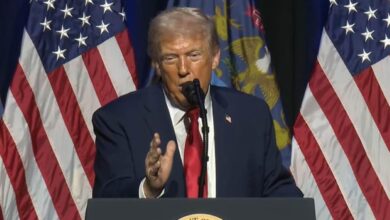New economic model may prevent stops of capital flow
The sudden stop of capital flow of a country means, according to experts, a bottleneck to its foreign finance, that is to say, the bankruptcy of the country, as it leads to the contraction of international capital flows and the purchase and sale of foreign assets.

Researchers of the University of Malaga (UMA) identify variables that predict this event, on which financial markets stability depends. / Photo: Rawpixel
EurekAlert | University of Malaga
Listen to this article
Leer en español: Nuevo modelo puede evitar la bancarrota de un país
Early detection -which is key to the adequacy of the macroeconomic policies of a country against the risk derived from such stops of capital flows– has been previously studied. However, researchers of the UMA have taken a step forward by designing a new and more accurate prediction model, based on a sample of 103 countries, including emerging (73) and developed (30) countries, that were analysed for the period 1960-2016, thanks to the World Bank database.
"This event has significant negative effects on the global economy, as it has been proved that it leads to a drop in GDP growth, causes significant drops in production and employment, and gives rise to serious financial crises, hence, the importance of predicting it", explains researcher M. Belén Salas, main author of this study published in the scientific journal PLOS ONE.
'Sudden stops of capital flows' is the new global prediction model proposed by this research team of the UMA; an analysis of some economic parameters of these countries using decision trees, an innovative method never used before in this type of work.
Economic variables for decision-making
The result is a model for emerging countries, another for developed countries and one last model at a global level -thus far it has only been developed for emerging countries- that identify which economic factors have a direct connection to the stop of capital flows with the aim of predicting it, even one year in advance, and, therefore, being able to prevent it.
Also read: What will happen to the economy after COVID-19?
Thus, the researcher asserts that some of the more explanatory variables to predict the 'Sudden Stop' event in developed countries are the country's real interest rate, the monetary aggregate growth (M2), the rate of return of the stock market, the VIX index (an indicator that measures the volatility of the US stock market), the GDP growth (gross domestic product), the central government debt to GDP or the domestic credit to GDP.
"Hence, developed countries must be alert to the behaviour of these variables, since high real interest rates, public debt to GDP, M2 growth, the level of domestic credit and the volatility index are all linked to a higher probability of a sudden stop of capital flow", says Salas, who adds that a higher GDP growth and performance of the stock index are negatively related to the possibility of this event.
A new model that can be used as a reference for setting the macroeconomic policy of a country, as it provides tools to be considered to achieve financial stability. It has been designed by the Foreign Trade Expert M. Belén Salas, with the participation of the researcher David Alaminos and Professors Manuel Ángel Fernández and Francisco López Valverde from the Faculty of Economy and the School of Computer Science Engineering of the UMA, respectively.




